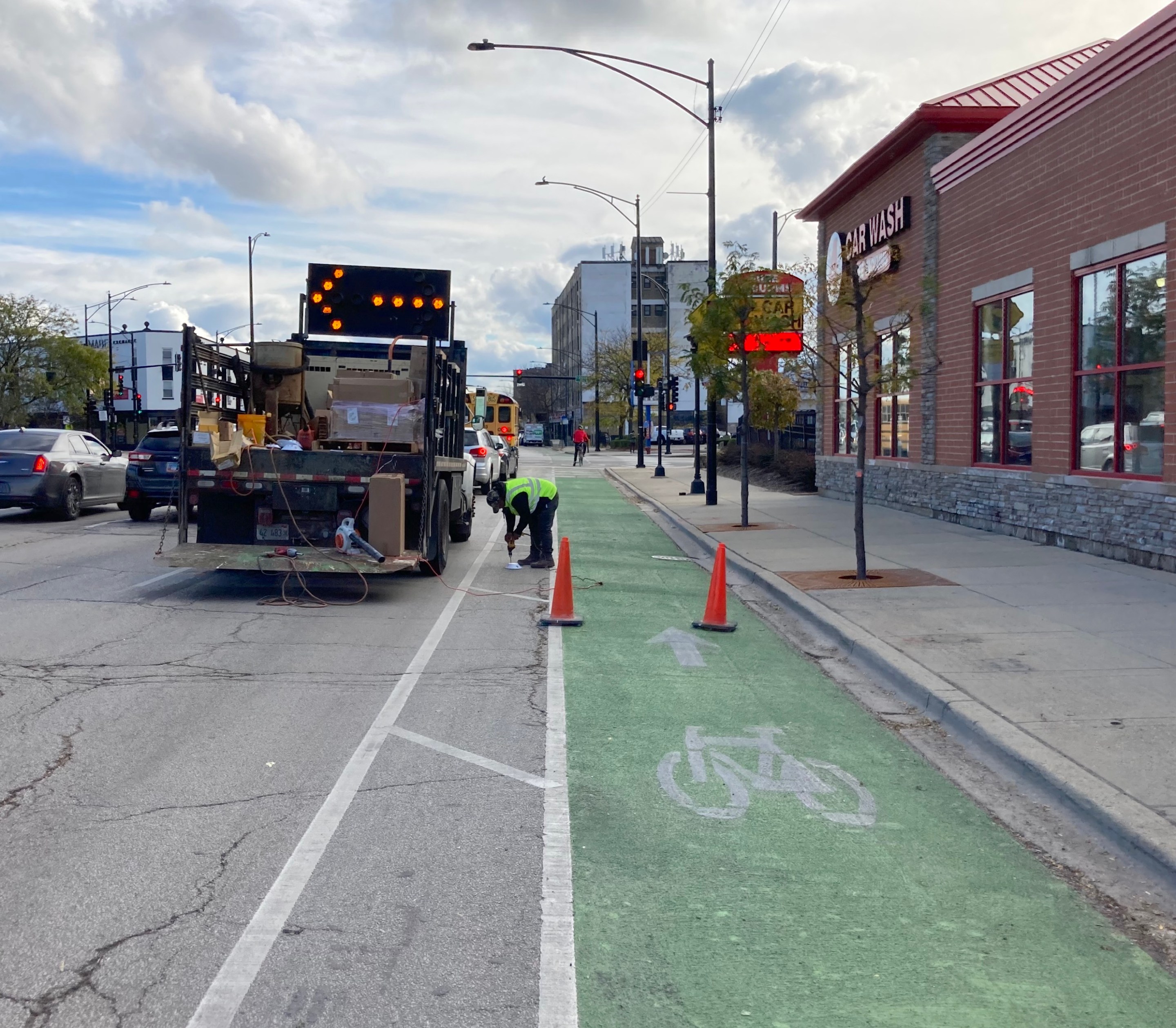Whenever parking-protected bike lanes are installed, there's bound to be a learning curve and as motorists get used to the new configuration, including "floating" parking lanes, and new stretches where parking is banned. However, for various reasons, the new Clark Street bikeways have been something of a worst-case scenario. But there's reason to believe thing will improve soon, as Chicago Department of Transportation crews were out today bolting down flexible plastic posts to delineate the lanes, which will at least make it more obvious where drivers should be parking.
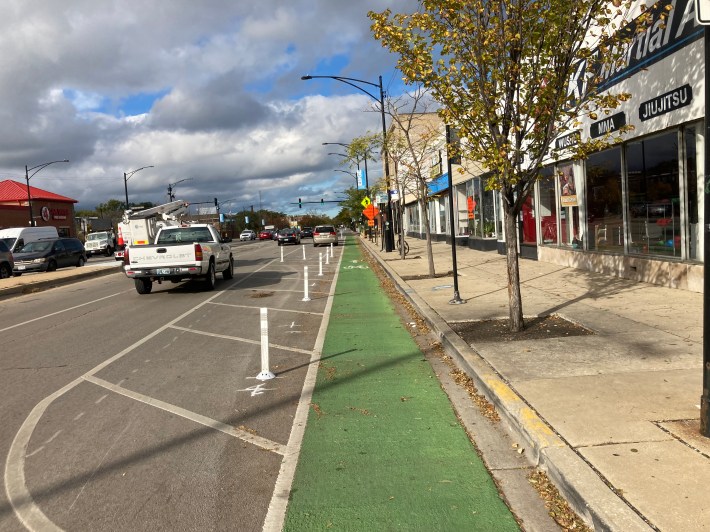
Assuming that the bike lanes begin functioning as intended, and more people start riding in them, bringing additional potential customers to the corridor, that should help reassure some of the merchants on the strip. A few of those business owners have been pushing back against parking conversions on Clark that were done to make room for the bikeways. More on that in a minute.
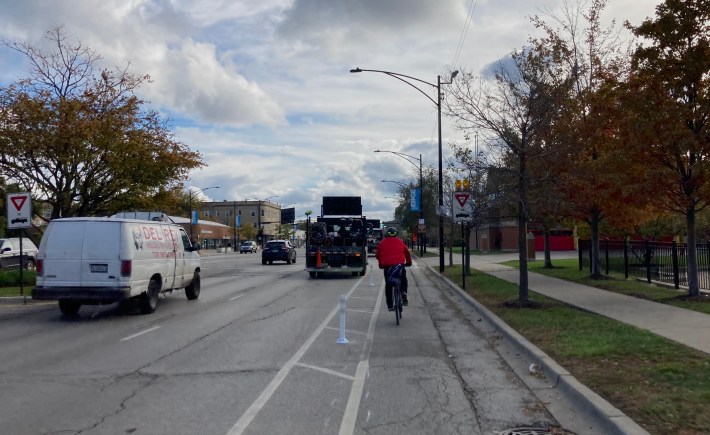
This project on the high-speed, four-lane stretch of Clark Street between Hollywood Avenue (5700 N.) in Andersonville and Devon Street (6400 N), the southern border of Rogers Park, was announced in late July. CDOT stripped most of the on-street parking from this segment of Clark to make room for the bikeways (there are plenty of parking lots on this car-centric stretch). However, in some locations on-street parking was preserved, either by creating curbside, parking-protected bike lanes, or by having the bikeway zigzag to the left side of a curbside parking lane, which means that stretch of the bike lane is non-protected.
The map below shows how the lanes switch from curbside parking-protected (green on the map below), to curbside plastic bollard-protected (yellow), to non-protected on the left side of the parking lane (red.)
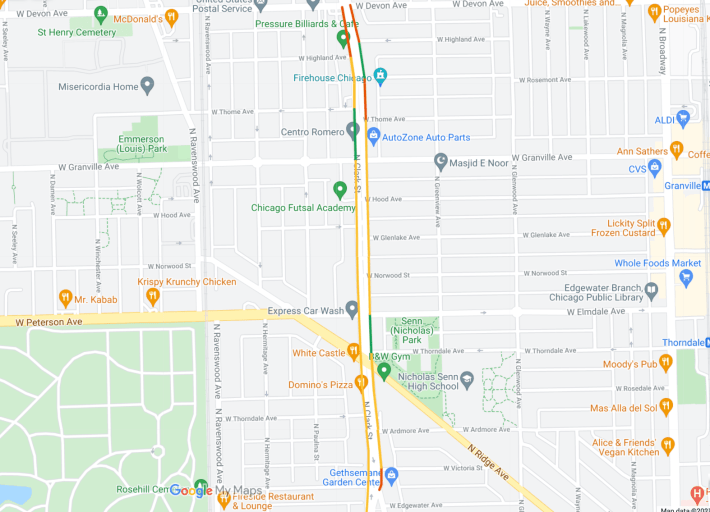
Work began in late August, and since then Streetsblog Chicago has fielded lots of complaints from cyclists about drivers parking in the lanes. That's not surprising since it's a potentially confusing layout for cyclists and drivers alike, especially before the posts were installed today.
Rode it today or should I say took the right car lane today 😬 pic.twitter.com/RohjyGFLAB
— Kevin (@KevinBr29715627) September 9, 2021
It took another two months before the posts were installed today. CDOT blamed the delay on pandemic-related supply chain issues.
When I rode the lanes this afternoon, it seemed like parking compliance was somewhat better than in the past, although it was certainly far from perfect. All the "No Parking" signs seem to be in place, so in locations where the bike lane is curbside with plastic posts, drivers who park in them can no longer claim that they were unaware they are illegally blocking a bikeway.
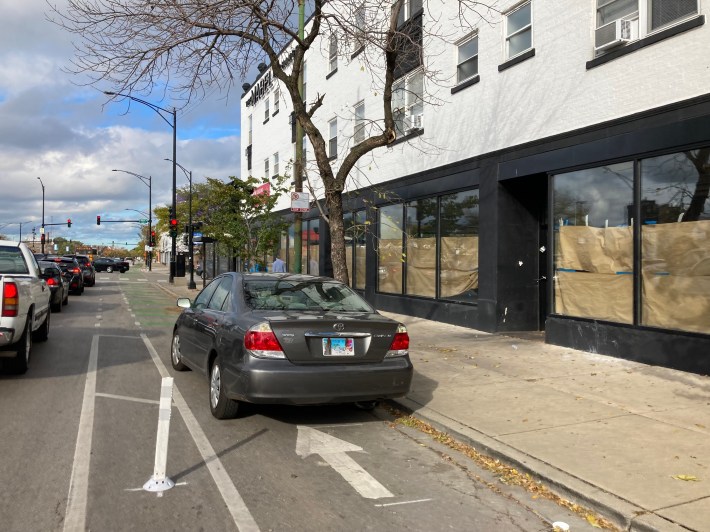
I noticed at least one merchant on a block where parking was stripped, George's Deep Dish pizzeria at 6221 North Clark, had a sign the window directing customers to a 15-minute standing zone around the corner on the side street, Thome Avenue.
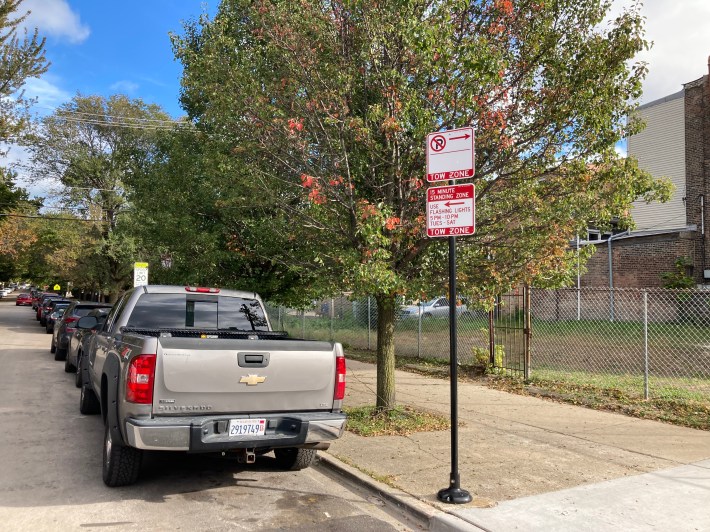
One major upside of the the post installation is that north of Granville Avenue, where northbound Clark is reduced from two travel lanes to one to make room for the bike lane and parking, a wall of the plastic bollards has been installed to prevent motorists from driving in the bike lane. That has recently been an issue. However, as you can see from the photo below, the new posts didn't stop a motorist from parking in the bikeway.
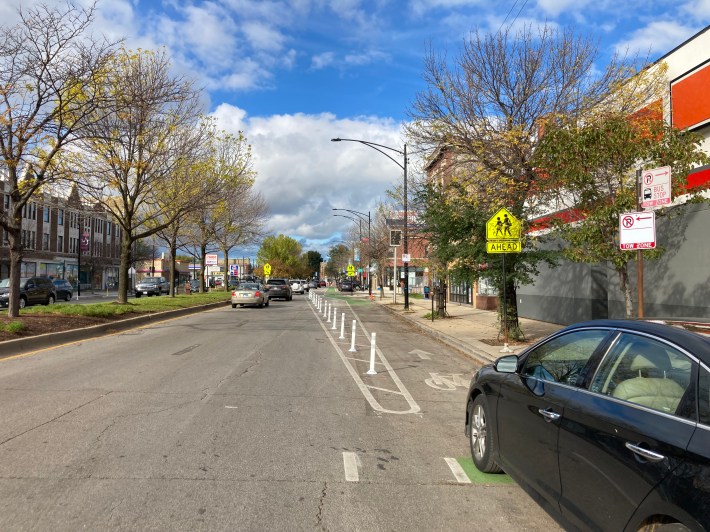
Word on the street is that there has been pushback from some merchants about the parking conversions. On some blocks, like this one below, the parking prohibition is being ignore by multiple drivers. It's somewhat understandable that some of the business owners are grumpy about the change, since they're used to having super-easy parking for customers and employees, rather than drivers having to park across the street or around the corner.
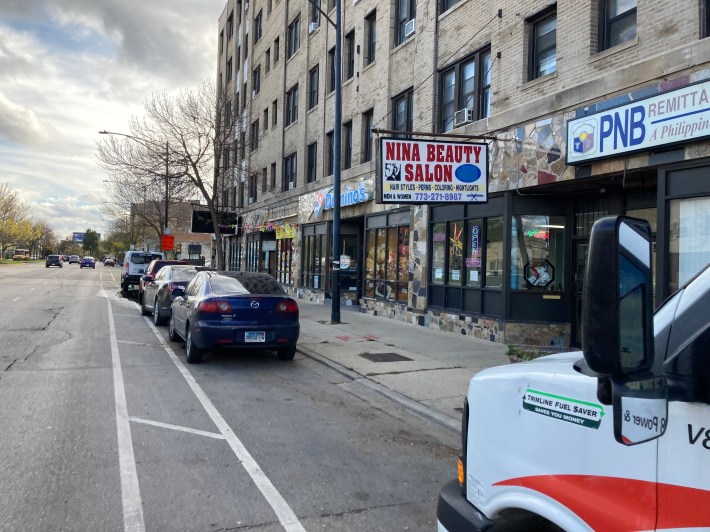
Since the now-completed bike lanes should be more functional, with more people riding them, this should help reassure business owners that the bikeways are bringing more potential customers to the corridor.
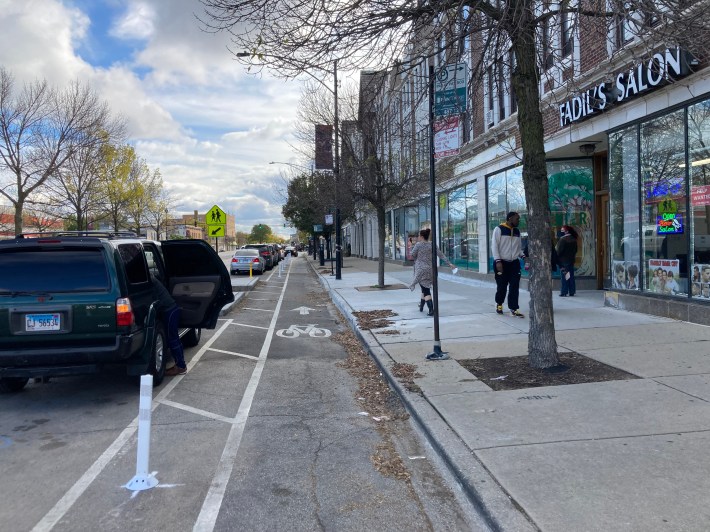
Local aldermen Andre Vasquez (40th) and Harry Osterman (48th) have doubtless been fielding some complaints from merchants about the new layout. But it seems like these reps could benefit from speaking with more of their constituents about the issue, including people who bike on Clark. And, obviously, ensuring that stakeholders are informed about planned changes to a street in advance reduces the likelihood of pushback after they're implemented.
Vasquez and Osterman should also look to Logan Square, where there was a bitter backlash from a hardware store owner and a restaurateur after parking was converted near their businesses in fall 2020 to make room for protected bike lanes on Milwaukee Avenue. There were actually a couple of news articles about the pushback at the time. A year later, basically no one is talking about that controversy – people simply got used to the new layout.

CDOT can do its part to help ease concerns that the parking conversions on Clark weren't worthwhile by keeping the bike lanes as rideable as possible. That means replacing flattened bollards, tweaking the design if necessary, and keeping the lanes free of trash, glass, and snow. And, of course, in the future the department should focus on building more lanes that have robust concrete protection or, better yet, are raised above street level, to help make parking non-compliance a non-issue.
